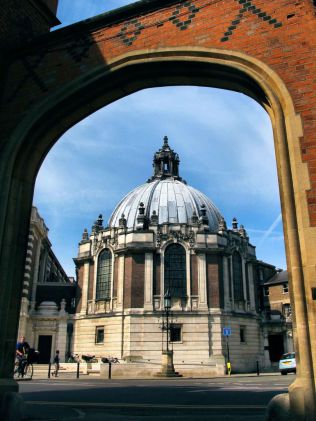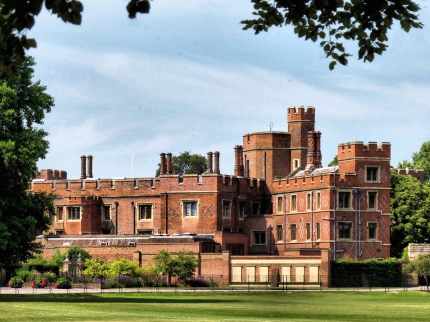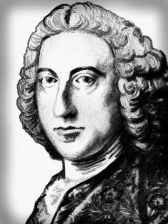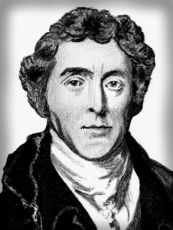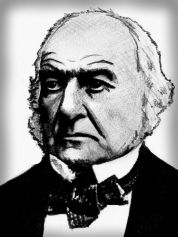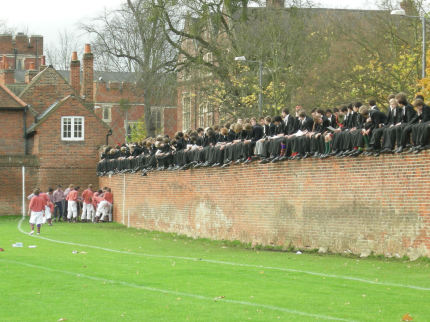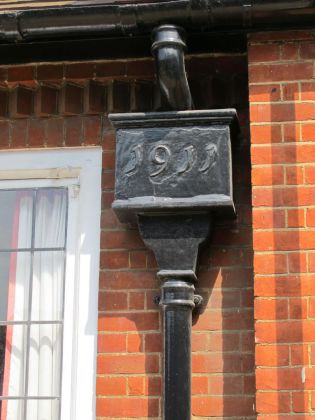
Eton
Although Eton and Datchet are not part of Slough now, before 1972 the three towns were connected as a local authority within Buckinghamshire and known as Slough and Eton. For this historic reason Eton and Datchet are included in this website..
Founded by King Henry VI (1421-1471), Eton College was intended as a charity school to provide free education to 70 poor boys who would then go on to King’s College, Cambridge, also founded by Henry VI in 1441. When he founded the school, Henry VI granted it a number of endowments, including large valuable land.
In 1461, when King Edward IV rose to power, he annulled all grants to the school and removed most of its assets and treasures to St George's Chapel, Windsor and the royal bequest and number of staff were much reduced.
The school suffered reduced income while still under construction. Completion and development of the school depended to some extent on wealthy benefactors. Building resumed when Roger Lupton was Provost, around 1517.
Some two and a half million bricks from Slough were used in the construction of parts of the college.
The college is open to visitors at certain times and tour tickets can be purchased from The Royal Windsor Information Centre (in Windsor Royal Shopping) or from the Eton College Gift Shop in Eton high street.
The curriculum at Eton was almost purely classical until the middle of the 19th century. Now, although the classics hav’nt been dropped, it consists mostly of modern subjects. The College facilities have been modernized and include science laboratories and language laboratories. The uniform dates from the 1850s and consists of a black tailcoat and waistcoat and pin-striped trousers. It does not, as popularly thought, represent the mourning dress for George III.
Designed by Laurence K Hall, the School Hall and School Library (above) were erected in 1906-1908 across the road from Upper School They were erected as a memorial to the Etonians who had died in the Boer War.
Eton College, having existed for nearly 600 years, has provided education for many famous and significant people including members of the Royal Family, 19 of its pupils have later become Prime Ministers, and several writers, Poets and entertainers.
Scholars have included writer Horace Walpole, son of Robert Walpole, and the poets Thomas Gray and Percy Bysshe Shelley. More recently famous Old Etonians include: comedian and writer Hugh Laurie, actor Patrick Macnee of the TV series The Avengers and The New Avengers, spy Guy Burgess and author George Orwell.
Old Etonian Prime Ministers
The school has had many distinguished graduates including eighteen fine and distinguished Prime Ministers of Britain. Oh and also David Cameron, so I suppose that makes nineteen.
Years are the terms of office.
- Robert Walpole1721-1742
- John Stuart, Earl of Bute1762-1763
- George Grenfell1763-1765
- William Pitt the Elder, Earl of Chatham
- 1766-1768
- Augustus Fitzroy, Duke of Grafton
- 1768-1770
- Frederick North1770-1782
- William Grenville, Lord Grenville
- 1806-1807
- George Canning1827
- Arthur Wellesley, Duke of Wellington
- 1828-1830
- Charles Grey, Earl Grey1830-1834
- William Lamb, Viscount Melbourne
- 1834
- 1835-1841
- Edward Smith-Stanley, Earl of Derby
- 1852
- 1858-1859
- 1866-1868
- William Ewart Gladstone1868-1874
- 1880-1885
- 1886
- 1892-1894
- Robert Gascoyne-Cecil, Marquess of Salisbury
- 1885–1886
- 1886–1892
- 1895–1902
- Archibald Primrose, Earl of Roseberry
- 1894–1895
- Arthur Balfour1902–1905
- Anthony Eden1955-1957
- Harold Macmillan1957-1963
- Alec Douglas-Home, Earl of Home
- 1963-1964
- David Cameron2010-2016
William Pitt, 1st Earl of Chatham
(1708-1778)
History named William Pitt the Elder to distinguish him from his son. He was nicknamed the Great Commoner as he refused to accept a title until 1766. He married Hester Grenville and they had three sons and two daughters. He was educated at Eton, Trinity College Oxford, and the University of Utrecht.
He entered Parliament in 1735 and first became Prime Minister at the age of 57. He served this office twice for a total of 2 years 76 days. He had an immense influence on parliament. He effectively led Britain through the premierships of Pelham, Earl of Newcastle, and Cavendish, 4th Duke of Devonshire. His great achievements, including the birth of the British Empire, were made before he actually became Prime Minister.
He criticised the way the country’s strategy at war particularly against the French and Spanish. Defeats by the French drew support to him and he was given the task of commanding the wars as Secretary of State. He used British troops, enlarged the Navy and he made friendly overtures towards Prussia. Pitt understood the relationship between war and trade success and his military campaigns in India, Canada, the West Indies and West Africa were directed to this end. The city of Pittsburgh, Pennsylvania, is named after him, as are other cities and towns in the United States, Canada, and Australia.
Arthur Wellesley, Duke of Wellington
(1769-1852)
Also famously known as The Iron Duke, Wellington was born the sixth of nine children in Dublin. He married Catherine Pakenham, and they had two sons. He was educated at Eton and Royal Academy of Equitation, France.
Wellesley fought at Flanders in 1794, and led the campaign in India in 1796, for which he was knighted. He returned to England in 1805 and entered Parliament the following year. In spite of his parliamentary duties he continued his military career and commanded campaigns in Portugal and France becoming commander of the British Army in the Peninsular War. In 1814 he was given the title Duke of Wellington, and commanded campaigns in the Napoleonic Wars achieving ultimate victory at Waterloo in 1815.
In 1828 Wellington became Prime Minister for the first time at the age of 58. His total time in this office was to be 2 years 320 days. He was generally conservative in approach but one of his main achievements was overseeing Catholic emancipation in 1829, granting of almost full civil rights to Catholics in the United Kingdom.
This was controversial at the time and Wellington only persuaded the King by threat of resignation. Lord Winchilsea opposed the bill and he and Wellington fought a duel on the matter in Battersea Park. They deliberately missed each other in firing, honour satisfied. ‘The Iron Duke’ died in September 1852 after a series of seizures. After lying in state in London, he was buried in St Paul’s Cathedral, London. Wellington Arch stands in Hyde Park and his name lives on in the Wellington boot even though that pece of footwear beaars very little resemblance to the kind of boots that the duke would have worn.
William Ewart Gladstone
(1809-1898)
Gladstone was the fourth son and fifth of six children. He married Catherine Glynn and they had four sons and four daughters. Educated at Eton and Christ Church, Oxford, He became Prime Minister at the age of 58 and served four terms in office totalling 12 years, 126 days.
His campaigned for Irish Home Rule but seemingly oddly, he opposed the abolition to the abolition of slavery until you realise that his family used slaves on their West Indian plantation. He clearly had strong and well-intentioned convictions in other fields though, and in 1840 he began his efforts to rescue and rehabilitate London prostitutes, walking the streets, even as Prime Minister, trying to convince them to change their ways. He spent much of his own money on this work.
In 1846, Gladstone, not wishing to work with Disraeli, became a Liberal-Conservative and in 1867, he became the leader of the Liberal party becoming Prime Minister the following year.
In 1847 after a heavy defeat against Disraeli he resigned as leader of the Liberals, but became Prime Minister again in 1880. Overseas events were troublesome, as the British lost control in the Sudan. In 1885 when the government’s budget was defeated, Gladstone resigned. Just the following year, at the age of 76, he became Prime Minister again and introduced an Irish Home Rule Bill. It was defeated and Gladstone lost the General Election held later that year. In the 1892 election, the Liberals, campaigning on the issue of a parliament for Ireland, won and Gladstone returned to power for a fourth time. This time his Irish Home Rule Bill made it through the House of Commons but was rejected by the Lords. He resigned in 1894 and died from cancer in 1898.
The Gladstone bag was designed and manufactured by JG Beard, an avid admirer of Gladstone. The bag developed into the flat-sided suitcase of modern times. The rounded-side bag opening at the top, the type we now think of as a ‘Gladstone’ bag, is actually a misnomer.
Cannon Yard, Eton College
This cannon is one of several captured after the Siege of Sevastopol (1854–55) which was carried out by British, French, Sardinian, and Turkish troops during the Crimean War.
The Russian army had to leave its stronghold and evacuate over a pontoon bridge to the north shore of the inlet. The Russians sank their entire fleet to prevent it from falling into western hands and to block the entrance to the western ships. When the western troops entered Sevastopol, they were faced with the ruins of a formerly glorious city.
Eton Wall Game
The Eton Wall Game is still played at Eton on a strip of ground 120 yards long and 5·5 yards wide, next to a brick wall. It is traditionally played on St Andrew’s day and Ascension Day. Scratch matches are played throughout Michaelmas and Lent terms, where boys from different year groups and masters take part.
The Collegers or King’s Scholars take on the Oppidans or the rest of the school. College can only pick from 70 boys, the Oppidans some 1,250. College have the access to the field. On St Andrew’s day, the Oppidans throw their caps over the wall in defiant challenge then climb over while the College march from the far end of the field arm in arm to meet them.
The aim of the game is to get the ball to the opponent’s end called the calx where a player can earn a shy (one point) by lifting the ball against the wall with his foot. A teammate then touches the ball with his hand and shouts ‘Got it!’ The scoring team can attempt a goal (nine points) by throwing the ball at a designated target which is either a door at one end of the field or a tree at the other. Players can also score a kicked goal, worth five points, if he kicks the ball out and it hits a goal during the normal course of play.
Most of the game is a rugby-style scrum called a bully formed next to the wall and wanders up and down until the ball emerges. Within calx the teams may furk the ball or hook it backwards. The game lasts up to an hour, with two halves of 30 minutes each. Scoring goals (ten points) is very rare. It’s a physical game and players in the bully shove and push each other and even place their fists against opponents’ faces though punching is not permitted, nor is grabbing an opponent’s shirt. Famous past players of the Wall game include Boris Johnson who was Keeper of the College Wall, George Orwell and Harold Macmillan.
Backwater on the Thames at Eton
Thomas Gray
(1716-1771)
Considered a forerunner of the Romantic poets, Thomas Gray was born in Cornhill, London on 26th December 1716. He was the only one of twelve children to survive beyond childhood. At Eton College he studied classical languages, literature, and history and became friends with another poet, Richard West, and Horace Walpole, son of the Prime Minister. After Eton he went on to study at the University of Cambridge.
His first poem to be published (anonymously) was Ode on a Distant Prospect of Eton College in 1747, thirteen years after he left Eton. He finished his best known poem, Elegy Written in a Country Churchyard, in 1750 and sent it to Horace Walpole, who was now an author. Walpole insisted that it should be published and so it was the following year. It is believed this poem was written in the churchyard of St Giles Church in Stoke Poges where he was later to be buried.
St Giles Church, Stoke Poges
Among other poems by Gray are: The Progress of Poesy (1754), Sonnet on the Death of Richard West (1775), The Progress of Poesy (1754), and The Bard (1757). He travelled throughout Britain in search of picturesque scenery and ancient monuments recording his impressions in his Journal (1775).
Even drain pipes in Eton are historic
Eton High Street
The high street leads you to Windsor Bridge and on the way it offers you a mixture of shops, pubs, restaurants, art galleries, the odd bookshop and even one or two normal ones. One restaurant worth a mention is the Cock Pit which was established in 1420 and had the name and date painted on its walls. Cock fights took place there in the 17th and 18th centuries. It would be a wonderful sight of sagging roof and wobbly walls which it retains but The Tiger Garden restaurant chain took it over in around 2005 and rubbed out this historic name in favour of a corporate sign the first real sign in Eton of the corporation wrecking history.
Tom Brown Tailors were established in 1784
My name is Gary Flint. I'm author, photographer & illustrator for Postcards from Slough. If you wish to make any comments on the contents of the website please click on the ladybird below:
Gary Flint
08/03/1961 - 09/04/2019
Postcards from Slough is an independently funded website. We are open to offers of sponsorship from companies that have any connections to the town. To contact us please click on the ladybird below:
Chalvey Community Forum
Postcards from Slough is linked with a local action group the Chalvey Community Forum. The group liaises with various local organisations in order to improve the quality of life for residents in the ward of Chalvey and Salt Hill. To learn more please click on the maidenhair leaf below:
Museum of Berkshire Aviation
I volunteer as a guide at the Museum of Berkshire Aviation. It is a special museum and if you would like to know more about the museum then please click on the motif below:
To learn more about the museums activities while staying within this website click on the tab at the top of the page or on the motif below:
Graces Guide
Postcards from Slough uses some images from Grace's Guide. Click on the button below:
British Listed Buildings
Postcards from Slough contributes material to British Listed Buildings and uses the site for cross referencing purposes. Click on the button below:
